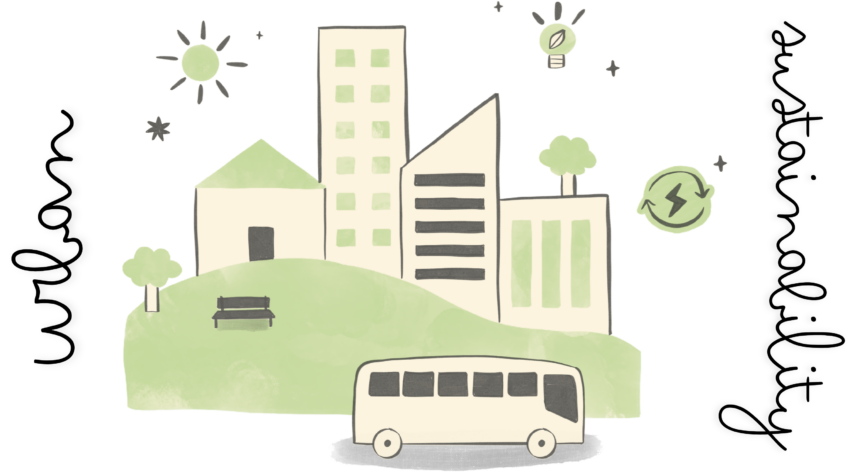Looking out from the descending airplane window at night, I follow the spiderwebs of lights growing bigger and brighter. The delicate spindles turn into busy highways, the small pearls of light grow into crossroads and squares, and all the darker spaces in between take the shape of parks and residences. What one sees outside of the window of a plane at night is the true soul of a city: a network of light and life.
Cities are complicated systems of human interaction and concrete infrastructure, which are somehow supposed to exist in symbiosis. Just like the spiderwebs they often resemble when looked at from a bird's eye view, their resilience is in their flexibility. However, with urban growth that flexibility – of human mobility, of construction, of redefining routes and systems – lessens, thus also exposing the inherent fragility of cities. Air pollution, noise pollution, stress, relentless pace of economic development: it takes more and more out of the environment and of the people living in cities to keep them stable.
A solution that has been growing in popularity is the (15-minute model)(https://www.dezeen.com/2023/10/16/15-minute-city-guide/). It is at its core an attempt to reconnect people with each other and with the city by reinforcing the sub-networks within the cities. It is imagined that by providing all essential elements of urban life into an 800 meter walkshed from a (central) residential area – from grocery stores and parks to schools and kindergartens to workplaces and recreational facilities. The city would then become more of a conglomeration of hubs rather than the singular giant unit we are used to. It definitely comes with its perks: it would reduce car use by promoting walkability, thus also driving CO2 emissions down; it would offer more opportunities for (people to interact)(https://www.bbc.com/worklife/article/20201214-how-15-minute-cities-will-change-the-way-we-socialise) with each other regularly and form stronger bonds; it would incentivize a better work-life balance by saving on commute time. (Conspiracy theorists)(https://www.nytimes.com/2023/03/01/world/europe/15-minute-city-conspiracy.html) claim that the 15-minute city model is part of a larger plan to confine people to certain areas of town. That is – though – not the aim of the project, as the 15-minute plan will not restrict the movement of people rather it would take away the necessity of a long commute.
While conspiracies about nefarious grand schemes concealed by promises of a better lifestyle have been debunked, there are certain aspects of the 15-minute model that have often been largely neglected at sustainability conferences where the plan has become a buzzword. To illustrate them, all we need to do is consider what we, NYU Abu Dhabi students, dislike about life on campus. In a way, NYUAD is a 15-minute city: we have all that is essential to us, the residents, facilities within walking distance, including a convenience store, a gym, a library, several different restaurants and cafes, an art gallery, and a concert space (or even three halls, actually). Life here is comfortable. Yet it feels isolating. For now, we have the incentive of going into the city for experiences such as shopping centers or cinemas with blockbuster movies, among many others. But if those were also within campus, there would be no reason for us to leave at all, considering that they are now building a mall next to campus that is soon going to become a reality In fact, we already are so busy that we can spend weeks on end without going out into the city. Now scale it all up.
Memusatkan hidup kita di kantor juga tampaknya tidak menawarkan keseimbangan kehidupan kerja yang dijanjikan. Orang memerlukan tingkat keterpisahan fisik dari pekerjaannya agar dapat mematikan mentalitas kerja mereka (sekali lagi, pikirkan kembali akhir pekan atau bahkan waktu istirahat yang Anda habiskan di kampus). Jika lokasi tempat tinggal Anda didasarkan pada lokasi kantor Anda, bukankah hidup Anda sepenuhnya berpusat pada pekerjaan Anda?
Kota yang berjarak 15 menit ini juga merupakan model yang dikembangkan di wilayah yang memungkinkan untuk dilalui dengan berjalan kaki, mengingat iklim tempat tersebut. Namun tidak masuk akal jika mengharapkan kemampuan berjalan kaki yang lebih baik sebagai hasil dari rencana tersebut di iklim kering, misalnya, seperti yang terjadi di UEA. Ada langkah-langkah lain yang harus diambil terlebih dahulu untuk memastikan keselamatan penduduk dalam kondisi cuaca ekstrem sebelum para pembuat kebijakan mempertimbangkan untuk mengadopsi rencana pembangunan perkotaan ini.
Lalu seperti apa solusi sempurna untuk keberlanjutan kota? Kesempurnaan bukanlah sesuatu yang mampu dicapai oleh sebuah kota, namun mungkin kita harus mengikuti garis hati kota tersebut: garis dan titik paling terang di jaringan kota pada malam hari memberi tahu kita banyak hal tentang ke mana orang ingin pergi dan berada serta melakukannya bersama-sama. Mungkin kita bisa belajar satu sama lain dan terhubung dengan sistem transportasi umum yang aman, bertemu di ruang publik kecil di lingkungan kita, dan menanam kebun bersama di taman. Integrasi, keterlibatan, dan imajinasi dapat membawa kita lebih jauh dari sekadar kota berkelanjutan yang hanya berdurasi 15 menit.
Yana Peeva adalah Pemimpin Redaksi. Kirimkan email kepada mereka di [email protected].

